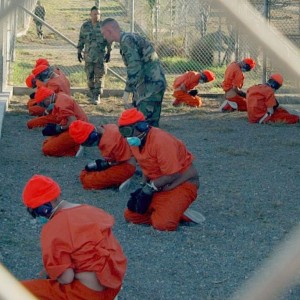 In a (damning, though fair) review of Corey Robin’s 2011 book painting conservative ideology as united only by the revanchist urge to maintain rule (and a slightly less controversial text from a grinning TV posterboy of the American left, Chris Hayes), Andrew Seal argues that placing affect/feeling of individuals at the centre of their analysis—as he claims both authors do—means consistently mistaking hegemony for hierarchy, missing the forest for the trees, and forgetting that, if there is a ruling class, that it then needs to be addressed as a class.
In a (damning, though fair) review of Corey Robin’s 2011 book painting conservative ideology as united only by the revanchist urge to maintain rule (and a slightly less controversial text from a grinning TV posterboy of the American left, Chris Hayes), Andrew Seal argues that placing affect/feeling of individuals at the centre of their analysis—as he claims both authors do—means consistently mistaking hegemony for hierarchy, missing the forest for the trees, and forgetting that, if there is a ruling class, that it then needs to be addressed as a class.
It’s a mesmerizing, superb piece of writing, more than enough to scare me away me from either of his sources. Invoking Tony Soprano and Jay Gatsby, he writes that “Robin’s vocabulary of feudalism…rhymes with preconceptions not yet articulated except as myths.”
Yet, in focusing away from affect and shining the spotlight instead on an amorphous “class interest,” Seal might be cutting off too much. It may well be that the maintenance of power structures results from instincts more complex than the monarchical pretensions of individual autocrats (an idea I give some credit), but to ignore instinct, affect and feeling entirely in favour Seal’s call to conceptualize “how the group acts” risks throwing the baby out with the bathwater.
Every time another layer of the Koch brothers’ global empire of misdirection, astro-turfing and white-washing is unpeeled, each new insight into the revolutionary plot hatched at Mont Pellerin to enthrone market-friendly ideas, each time money flows from powerful hands into the palms of key US decision-makers, it becomes easier to imagine power in the form of a cabal or a clan, as a clandestine conspiracy united not only in interest but in strategy to maintain their lordship over the suffering plebes.
Of course tracing and tracking these strategies matters, and responding to them needs to be a part of everyday politics. Yet, it’s also important to pay attention to the way in which feelings, and especially in-group feeling, play a part in perpetuating power structures. A recent piece by Sam Polk, a lapsed Wall Street insider, does something similar, and it’s gotten a fair bit of attention. Polk treats the industry’s pathology in terms of addiction. Most interesting about the piece, however, is not the soulless drive for ever more money and power (it’s always odd to me that people are surprised by capitalists acting, as Marx predicted, “as capital personified”), but with the picture he paints of industry politics. It’s true that the industry hates both financial regulation, and taxes on the rich, but when Polk put the systemic advisability of certain measures in question, the response from his boss was that he didn’t “have the brain capacity to think about the system as a whole. All I’m concerned with is how this affects our company.”
It’s not that the US financial class is uninterested in politics, but many of them nonetheless have an unsophisticated view of politics, backed up by fear and selfishness, not a desire to rule per se.
All this provides proper context for a recent exposé in New York Magazine detailing the hazing rituals of Kappa Beta Phi, an exclusive club for powerful Wall Street types. What is most striking about this soirée for billionaires (and those making due with only hundreds of millions) is not simply the fact of their gathering, but how much closer their hijinx come to the crude embarrassments of a freshman fraternity rush than a secret meeting of the Illuminati. It’s a wonder, reading the KBP piece next to a recent investigation into real college fraternities, that more Wall Street types aren’t falling off things to their death.
It’s easy to look at the incredible power that has been accumulated by Wall Street over the last 30 years and assume that its ascendance was by design, that it could only have resulted from a clandestine, concerted scheme. It’s doubly so, given that much of the still-powerful neoliberal orthodoxy is not only the brainchild of an intellectual revolution, but the result of a concerted political project. Fine. But strategy to respond has to take into account as well, how much “the smartest guys in the room” are far from it, and how much the structures of power are self-reinforcing, with or without concerted efforts by anyone. If there’s one thing Wolf of Wall Street can help make clear, it’s that.

